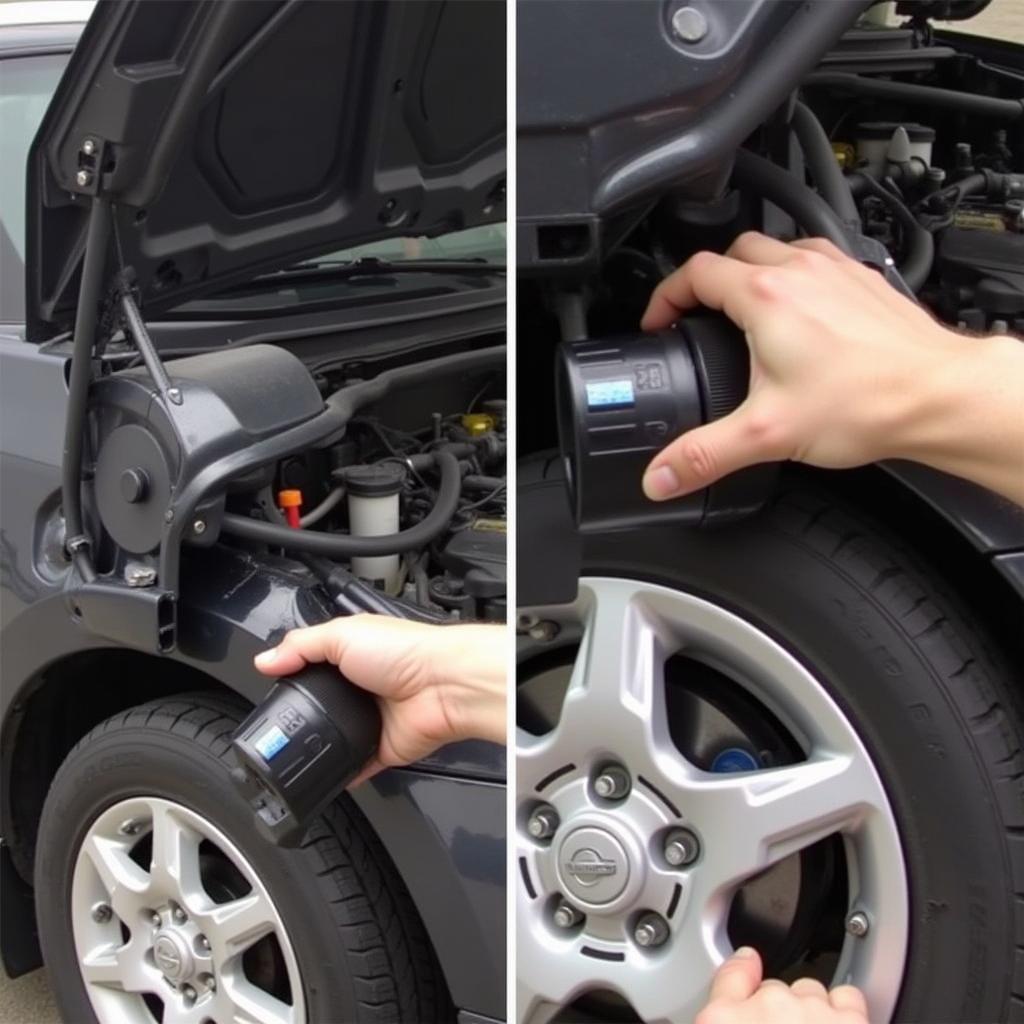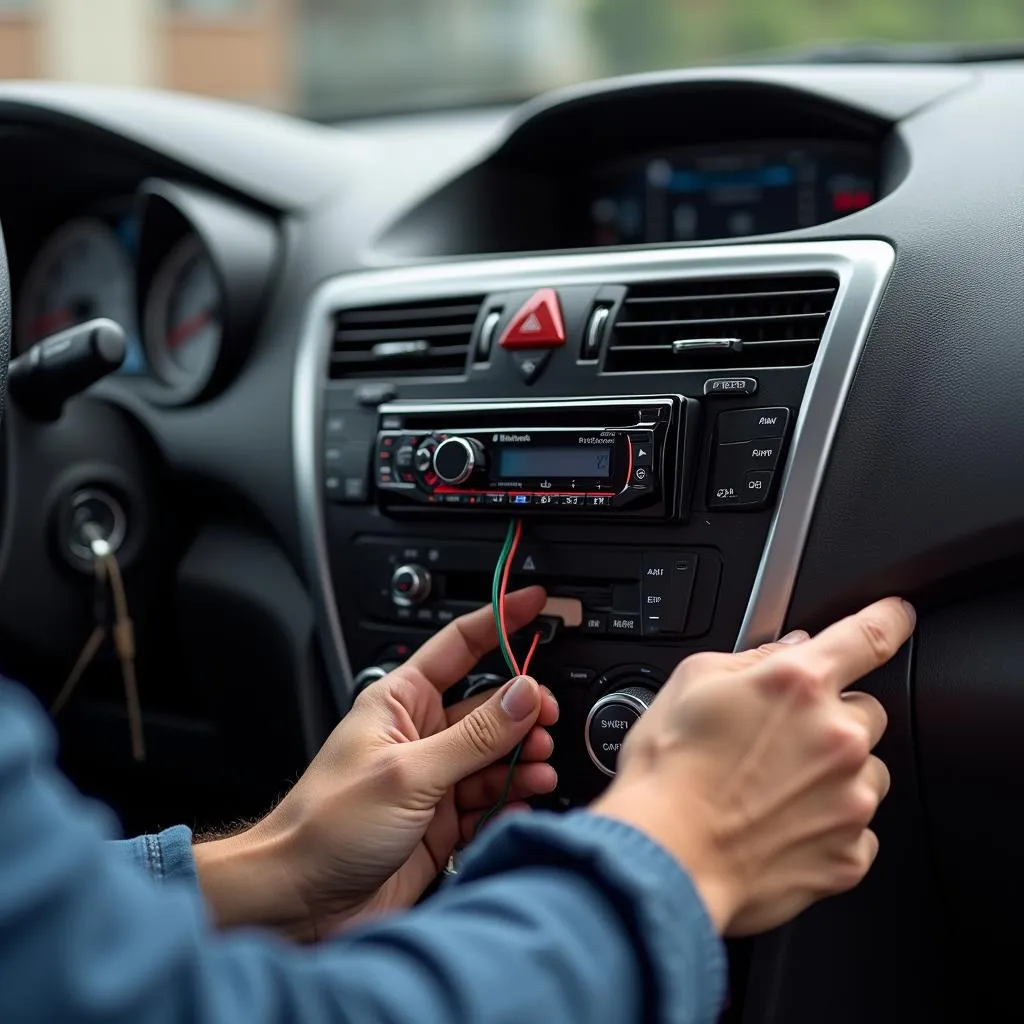The dreaded nissan maxima brake warning light can be a source of anxiety for any driver. Understanding its causes and how to address them is crucial for maintaining your vehicle’s safety and performance. This guide will provide you with a comprehensive overview of the brake warning light in Nissan Maximas, covering everything from simple fixes to more complex issues. 2012 nissan maxima brake warning light
Understanding Your Nissan Maxima’s Brake Warning Light
The brake warning light serves as your car’s way of communicating potential issues with the braking system. It’s designed to alert you to several potential problems, not just low brake fluid, which is a common misconception. Ignoring this warning could lead to dangerous driving conditions and costly repairs.
Common Causes of the Nissan Maxima Brake Warning Light
The brake warning light can illuminate for various reasons. These range from simple issues like a slightly engaged parking brake to more complex problems requiring professional diagnosis and repair.
- Low Brake Fluid: This is the most common culprit. A leak in the brake lines or worn brake pads can cause the fluid level to drop, triggering the warning light.
- Worn Brake Pads: Brake pads have wear indicators that activate the warning light when they become too thin. Ignoring this could damage your rotors and significantly reduce braking effectiveness.
- Faulty Brake Sensor: A malfunctioning sensor can trigger the warning light even if there’s nothing wrong with the braking system.
- ABS Issues: Problems with the Anti-lock Braking System (ABS) can also illuminate the brake warning light. This may be accompanied by the ABS warning light.
- Parking Brake Engaged: Sometimes the simplest explanation is the correct one. Ensure your parking brake is fully released.
Troubleshooting the Brake Warning Light
Before rushing to a mechanic, you can perform a few simple checks yourself.
- Check the Parking Brake: Make sure the parking brake is fully disengaged.
- Inspect Brake Fluid Level: Locate the brake fluid reservoir under the hood and check the fluid level. If it’s low, add brake fluid that meets your vehicle’s specifications.
- Visually Inspect Brake Pads: If you’re mechanically inclined, you can visually inspect the brake pads through the wheel spokes. Look for significant wear.
2005 nissan maxima brake warning light and charge warning light
When to Seek Professional Help
If the brake warning light persists after these checks, or if you notice any unusual braking behavior like spongy brakes or grinding noises, it’s crucial to seek professional help immediately. Driving with a compromised braking system is extremely dangerous.
“A blinking brake light shouldn’t be ignored. It often indicates a more serious issue that requires immediate attention,” says Michael Davis, a certified automotive technician with over 20 years of experience.
 Checking Nissan Maxima Brake Fluid
Checking Nissan Maxima Brake Fluid
Preventing Brake Warning Light Issues
Regular maintenance is key to preventing brake problems. This includes:
- Routine Brake Inspections: Have your brakes inspected by a qualified mechanic at least once a year or as recommended in your owner’s manual.
- Timely Brake Pad Replacement: Replace brake pads before they wear down completely.
- Brake Fluid Flushes: Flush your brake fluid according to the manufacturer’s recommended intervals to prevent corrosion and maintain optimal braking performance.
2005 nissan maxima brake warning light
Why is my Nissan Maxima brake warning light on?
The most likely cause is low brake fluid, worn brake pads, or a faulty sensor.
What should I do if my Nissan Maxima brake warning light is on?
Check the parking brake, inspect the brake fluid level, and visually inspect the brake pads. If the problem persists, consult a mechanic.
“Regular brake maintenance is not just about saving money on repairs; it’s about ensuring your safety and the safety of others on the road,” adds Davis.
2014 nissan maxima brake warning light
Conclusion
The nissan maxima brake warning light is a vital safety feature. Understanding its meaning and taking appropriate action can prevent accidents and costly repairs. Regular maintenance and prompt attention to warning signs are crucial for maintaining a safe and reliable braking system. Don’t ignore this important warning; your safety depends on it.
brake warning light dashboard nissan maxima 2010
FAQs
- Can I drive with the brake warning light on? It’s not recommended. Get it checked immediately.
- How often should I check my brake fluid? Check it monthly and top it off as needed.
- How much does it cost to replace brake pads? The cost varies depending on your model and location, but expect to pay between $150 and $300 per axle.
- How long do brake pads last? Brake pad lifespan varies greatly depending on driving habits and conditions, typically ranging from 25,000 to 70,000 miles.
- What is the difference between the brake warning light and the ABS light? The brake warning light indicates a general braking system issue, while the ABS light signals a problem with the anti-lock braking system.
- Can I add any type of brake fluid to my Nissan Maxima? No, use only the type of brake fluid specified in your owner’s manual.
- How often should I have my brakes professionally inspected? At least once a year or as recommended in your owner’s manual.


